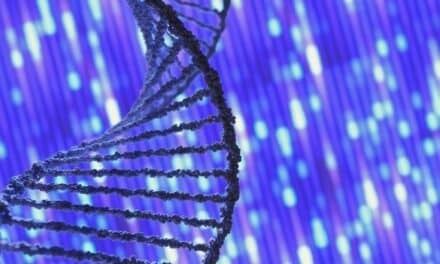By Nicholas Borgert

Improved screening technologies and more accurate analyses are crucial weapons in the fight against breast cancer. Although highly curable when detected in the early stages, breast cancer cannot be diagnosed with a simple office-based test. Also, patients at high risk cannot be easily identified. Even more important, no technology or biomarker is available for regular use to reduce breast cancer mortality or morbidity.
The challenges to overcome are immense, as the latest statistics reveal.
- A woman now living in the United States has a 1 in 8 chance of developing breast cancer sometime during her life.
- Many types of breast cancer differ in their tendency to spread (metastasize) to other body tissues.
- Treatment of breast cancer depends on the type and location of the breast cancer, as well as the age and health of the patient.
The American Cancer Society reports that breast cancer is the second-leading cause of death in American women of all ages. For women age 25–55, it is the leading cause of death. The incidence of breast cancer has more than doubled in the last 30 years.
This year alone, 245,000 women in the United States will be newly diagnosed with breast cancer and ductal carcinoma in situ (DCIS). An additional 45,000 women will die from previously diagnosed and, in the vast majority of instances, previously treated breast cancer. The number of women at high risk for breast cancer is expected to nearly double over the next 20 years to approximately 15 million.
National Cancer Institute statistics indicate that 100 million mammograms are performed each year worldwide. Yet, clinical investigators have found breast cancer and premalignant breast lesions as small as 0.15 mm. Breast cancers typically begin at least 10 years before they can be detected by mammography.
Clinical evidence suggests that 85% of breast carcinomas originate in the epithelial lining of the mammary ducts, and a common sign is the presence of pathological nipple discharge. The use of fiberoptic ductoscopy (FDS) for patients with nipple discharge is an emerging technique that allows direct visual access to the ductal system of the breast through nipple-orifice exploration.
Funding from the National Cancer Institute continues to be concentrated on improvements in conventional mammography. Research has focused on refining the technology, improving the conditions under which it is administered, and bettering the interpretation of x-ray films. For breast cancer, the mammogram has been regarded as the best means of early detection. Mammograms, however, usually require a referral and a separate visit to a radiology center. Accuracy can be a problem, too: A mammogram can miss as many as 30% of breast cancers in patients.
Lifeline Biotechnologies, a Reno, Nevada-based diagnostics research and development company, is taking breast cancer detection in a new direction. The company’s most recent innovation, the MastaScope™, is a fiber optics-based system for detecting abnormalities that begin in the breast’s milk duct network.
The milk ducts are important because virtually all breast cancer originates from the small mammary milk ducts of the breast. There are early forms of breast cancer, such as DCIS, that cannot be detected by physical examination alone during their initial growth stages.
DCIS occurs in the lining of the milk ducts and is completely contained within the ducts. If DCIS is left untreated, however, it may over a period of years begin to invade the breast tissue surrounding the ducts and become invasive breast cancer. In addition, atypical hyperplasia, a potential marker for future development of breast cancer, may also be undetected by physical examination.
Louis Keith, MD, PhD, serves as senior medical consultant for Lifeline Biotechnologies. A professor of obstetrics and gynecology at Northwestern’s Feinberg School of Medicine, Keith is also emeritus senior attending physician in the Department of Obstetrics and Gynecology at Chicago’s Prentice Women’s Hospital and Maternity Center.
According to Keith, practicing obstetricians/gynecologists have been frustrated with the lack of certainty and variations among results produced by conventional breast cancer diagnostic technologies. “Early detection of breast cancer is critical to treatment success and patient survival,” Keith says. Even the most modest changes in the detection of breast cancer can have enormous benefits to women throughout the United States.

The new system uses an extremely small fiber optic scope and lens to look inside the milk ducts of the breast. The procedure allows a physician to view in real time (and save on tape digitally) any abnormalities (up to 60 times actual size) and monitor changes in the cell lining, which may indicate a malignancy or other problem. The procedure can be done by a physician in an office or clinic in about 30 minutes. After the anesthetic, the MastaScope is inserted into a pinpoint-sized hole in the nipple. No large incision that could damage healthy surrounding tissue in the breast is required. The surgeon examines the duct and, if necessary, takes a tissue sample or biopsy.
For those in the high-risk category, the MastaScope offers the ability to detect cancer at the earliest stages, enhancing the likelihood of survival and recovery. Many standard imaging platforms typically cannot detect a lesion until it is about 5 mm in size, and at that time, the disease may have already become more invasive and potentially lethal.
Keith says the MastaScope is totally different from other products, and fully complementary to traditional breast cancer screening procedures that include mammography. “The MastaScope can be used in the office, operating room, or anywhere to produce very small tissue samples for analysis by a lab.”
He says palpation—manual examination of the breast performed by a physician—continues as the most common screening tool for breast cancer in women. Yet it is far from being a precise method of screening. Palpation accuracy, he says, can depend on many factors, including the skill and experience of the examining physician, the size of the breast, and the size and location of any lumps.
“I have done thousands of these exams, and yet I’m not always sure what I’m feeling unless the mass is larger than one centimeter in diameter,” Keith says. “It’s not a perfect science. Doctors don’t have magic fingers for detecting lumps—especially lumps of less than one centimeter and lumps in large breasts.”
Keith says a comprehensive analysis of mammographies performed even since the adoption of national technical standards reveals broad variations. “It is absolutely amazing how different the results can be with regard to specificity and sensitivity. There is no unanimity of results. Conventional mammography can be expected to produce false positives in 15% to 30% of cases, depending on a variety of factors,” he says. Too many mammograms have become a source of frustration for patients and their physicians. “Patients want a procedure that can be done during their lunch hour and that will allow them to get a yes or no answer quickly.”
With each reduction in stages of breast cancer comes a decrease in suffering for the patient and a decrease in costs for treatment. The National Institutes of Health set the medical costs associated with treatment of late-stage breast cancer at more than $230,000 per patient.
Keith says he has been working with Lifeline President Bill Reeves for more than 20 years. “I discussed the MastaScope concept with colleagues in England, then went to London and watched a MastaScope prototype in action. One session in that OR and I was totally convinced. It presented an absolutely clear view of the interductal area,” he says. “It works.”
The basic MastaScope configuration features a scope with a tiny camera, a video coupler, and a sterilization tray. Available accessories include a mobile work center, a flat-panel monitor, a digital videocassette recorder with video pack, and a complete patient prep kit.
The scope captures real-time full-color images within the breast ducts, and the images can be digitally recorded and shared immediately with clinical laboratories and specialists anywhere in the world. In addition to imaging, the MastaScope is able to collect small amounts of cell scrapings and tissue samples that can then be forwarded to oncology labs for comprehensive analysis.
While the MastaScope has been limited to use by physicians in clinical settings, the results of the procedure offer clinical labs an important tool for breast cancer screening and diagnosis.
A physician using the MastaScope in an operating room or at the office can generate biopsy samples that can be retrieved by a laboratory for a thorough pathological analysis, a critical step for charting the best possible treatment regimen for a breast-cancer patient.
Nicholas Borgert is a contributing writer for Clinical Lab Products.



